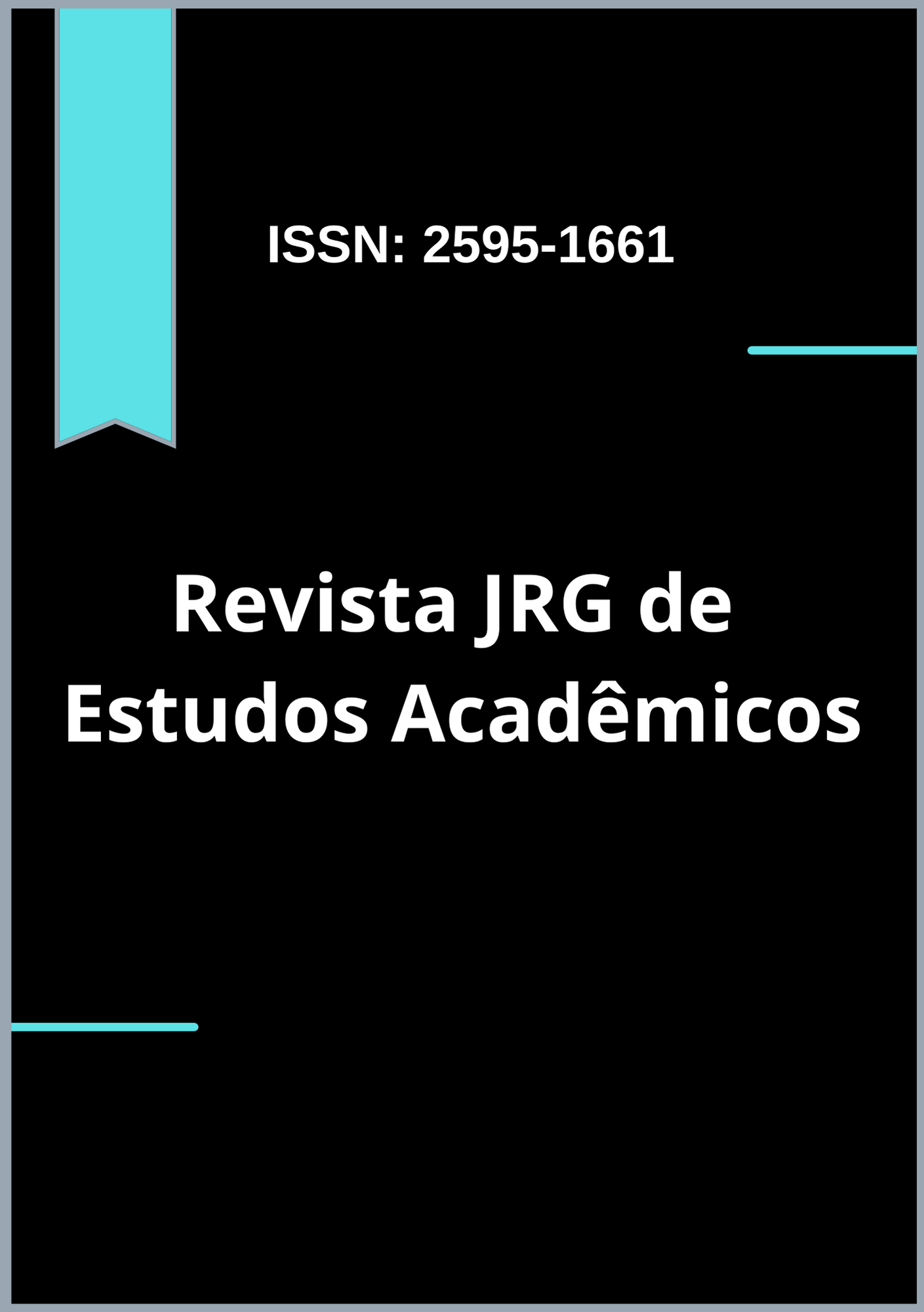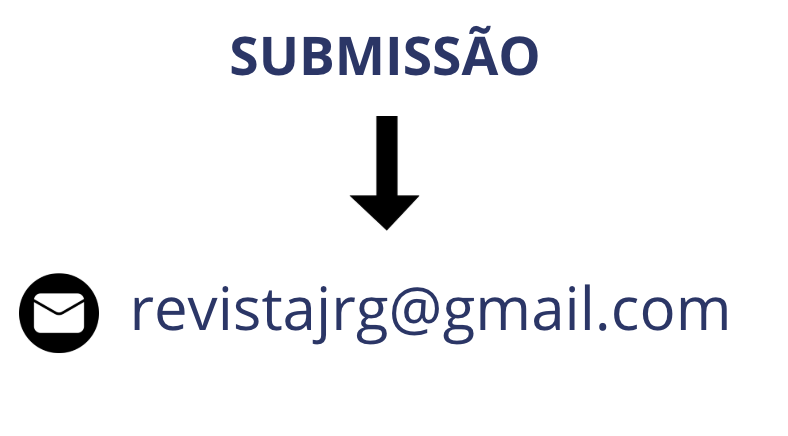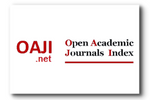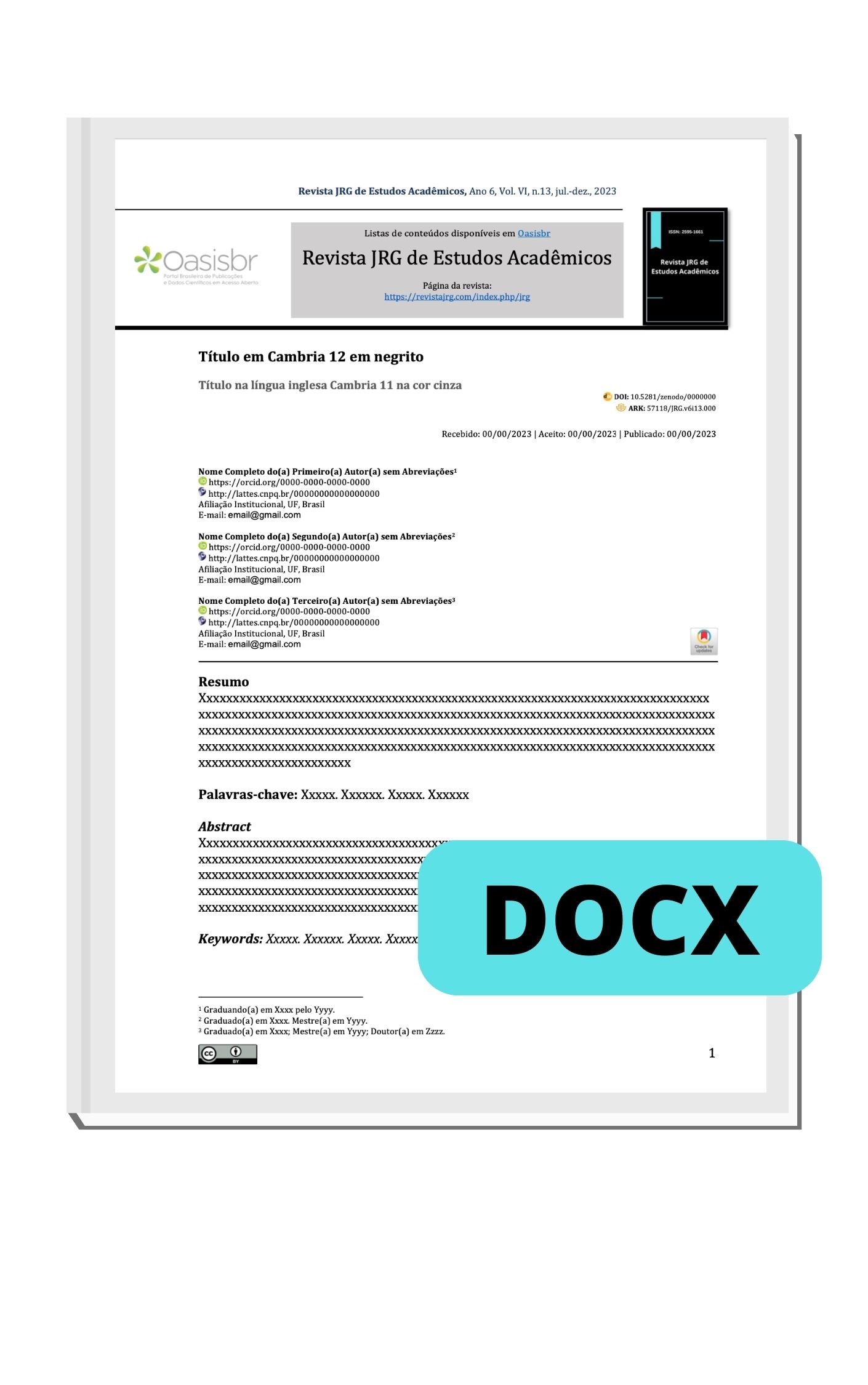Mecanismos Moleculares de Resistência Medicamentosa em Leishmania e suas Implicações para a Terapêutica
DOI:
https://doi.org/10.55892/jrg.v8i19.2573Palavras-chave:
Leishmaniose, Resistência a Fármacos, Mecanismos Moleculares, Medicina de PrecisãoResumo
A leishmaniose é uma zoonose vetorial causada por protozoários do gênero Leishmania cujo tratamento representa um desafio global. A terapia atual baseia-se num arsenal farmacológico limitado e tóxico, incluindo antimoniais pentavalentes, anfotericina B e miltefosina, e sua eficácia é cada vez mais comprometida pelo surgimento de resistência. Esta revisão integrativa sintetiza as evidências recentes sobre os complexos mecanismos moleculares de resistência do parasita. Entre os principais estão mutações em transportadores de membrana (como a aquagliceroporina AQP1), amplificações gênicas (a exemplo do gene MRPA) e alterações na biossíntese de esteróis, que diminuem a suscetibilidade aos fármacos. Adicionalmente, a acentuada plasticidade genômica de Leishmania, manifestada por seletiva dos medicamentos. Diante deste cenário, propõe-se um framework de medicina de precisão que integra diagnóstico molecular para diferenciar aneuploidias e reprogramação translacional, permite uma rápida adaptação à pressão resistência genética de tolerância fenotípica, vigilância epidemiológica regionalizada e o uso de terapias combinadas. O objetivo final é fornecer subsídios para decisões clínicas personalizadas, reduzir a disseminação de cepas resistentes e orientar o desenvolvimento de novos fármacos, incluindo aqueles ativos contra formas quiescentes do parasita, visando a erradicação completa e a sustentabilidade do tratamento.
Downloads
Referências
ALPIZAR-SOSA, E. A. et al. Amphotericin B resistance in Leishmania mexicana: alterations to sterol metabolism and oxidative stress response. PLoS Neglected Tropical Diseases, v. 16, n. 11, p. e0010779, 2022.
ANDRADE, J. M. et al. Comparative transcriptomic analysis of antimony resistant and susceptible Leishmania infantum lines. PLoS Neglected Tropical Diseases, v. 14, n. 8, p. e0008567, 2020. DOI: 10.1371/journal.pntd.0008567.
ANUNTASOMBOON, T. et al. Genome alteration of Leishmania orientalis under Amphotericin B inhibiting conditions. Parasites & Vectors, v. 17, n. 1, p. 456, 2024. DOI: 10.1186/s13071-024-0456.
ASHUTOSH et al. Nitric oxide-mediated killing of Leishmania donovani amastigotes in activated murine macrophages. Biochemical and Biophysical Research Communications, v. 358, n. 2, p. 515-521, 2007.
BAMOROVAT, M. et al. Poor adherence is a major barrier to the proper treatment of cutaneous leishmaniasis: a case–control field assessment in Iran. International Journal for Parasitology: Drugs and Drug Resistance, v. 23, p. 12-17, 2023.
BHANDARI, V. et al. Drug susceptibility in Leishmania isolates following miltefosine treatment in cases of visceral leishmaniasis and post kala-azar dermal leishmaniasis. PLoS Neglected Tropical Diseases, v. 6, n. 5, p. e1657, 2014.
CARNIELLI, J. B. T. et al. A Leishmania infantum genetic marker associated with miltefosine treatment failure for visceral leishmaniasis. EBioMedicine, v. 36, p. 83-91, 2019.
CARNIELLI, K. T. et al. 3′-Nucleotidase/nuclease is required for Leishmania infantum clinical isolate susceptibility to miltefosine. EBioMedicine, v. 36, p. 83-91, 2022.
CARRASCO, B. et al. Drug-resistance biomarkers in Leishmania infantum through nanopore-based detection of aneuploidy and gene copy number variations with LeishGenApp. Parasitology Research, v. 124, n. 3, p. 789-802, 2022.
CEARÁ (Estado). Secretaria da Saúde. Coordenadoria de Vigilância Epidemiológica e Prevenção em Saúde. Nota Técnica nº 01/2023: tratamento das leishmanioses. Fortaleza: SESA, 2023.
CHARRAHY, Z. et al. Climate change and its effect on the vulnerability to zoonotic cutaneous leishmaniasis in Iran. Transboundary and Emerging Diseases, v. 68, n. 5, p. 2689-2699, 2021.
COLLETT, J. et al. Chemogenomic profiling of antileishmanial efficacy and resistance in the related kinetoplastid parasite Trypanosoma brucei. PLoS Neglected Tropical Diseases, v. 13, n. 7, p. e0007580, 2019.
DIRES, A. et al. Knowledge, attitude and prevention measures of students towards cutaneous leishmaniasis in Delanta district, Northeast Ethiopia. Parasite Epidemiology and Control, v. 2, p. e00241, 2022.
DOUANNE, M. et al. MRPA-independent mechanisms of antimony resistance in Leishmania infantum. mBio, v. 11, n. 4, p. e01234-20, 2020. DOI: 10.1128/mBio.01234-20.
DOUANNE, M. et al. Unravelling the proteomic signature of extracellular vesicles released by drug-resistant Leishmania infantum parasites. Journal of Extracellular Vesicles, v. 9, n. 1, p. 12045, 2020. DOI: 10.1080/20013078.2020.12045.
DUARTE, A. G. S. et al. Factors associated with human visceral leishmaniasis in the Americas: a systematic review with meta-analysis and meta-regression. Infectious Diseases of Poverty, v. 14, n. 1, p. 15, 2025.
DUMETZ, F. et al. Molecular Preadaptation to Antimony Resistance in Leishmania donovani on the Indian Subcontinent. mSphere, v. 3, n. 5, p. e00548-17, 2018.
DUMETZ, F. et al. Modulation of aneuploidy in Leishmania donovani during adaptation to different in vitro and in vivo environments and its impact on gene expression. mBio, v. 8, n. 3, p. e00599-17, 2017.
FERNANDEZ-PRADA, C. et al. Different mutations in a P-type ATPase transporter in Leishmania parasites are associated with cross-resistance to two leading drugs by distinct mechanisms. Journal of Biological Chemistry, v. 291, n. 50, p. 25578-25589, 2016. DOI: 10.1074/jbc.M116.748226.
FERNANDEZ-PRADA, C. et al. High-throughput Cos-Seq screen with intracellular Leishmania infantum for the discovery of novel drug-resistance mechanisms. PLoS Neglected Tropical Diseases, v. 12, n. 9, p. e0006789, 2018. DOI: 10.1371/journal.pntd.0006789.
FERREIRA, T. R. et al. Amphotericin B resistance in Leishmania amazonensis: characterization of a clinical isolate from Brazil. PLoS Neglected Tropical Diseases, v. 18, n. 5, p. e0012175, 2024.
GARG, M. et al. Quantitative secretome analysis unravels new secreted proteins in Amphotericin B resistant Leishmania donovani. Proteomics, v. 19, n. 12, p. e1800456, 2019. DOI: 10.1002/pmic.201800456.
GAZANION, E. et al. Cos-Seq for high-throughput identification of drug target and resistance mechanisms in the protozoan parasite Leishmania. Nucleic Acids Research, v. 44, n. 12, p. e115, 2016. DOI: 10.1093/nar/gkw456.
GOMAA, A. A. et al. Evaluation of diagnostic performance of parasitological and serological tests for visceral leishmaniasis in endemic areas. PLoS Neglected Tropical Diseases, v. 19, n. 4, p. e0012345, 2025.
GONÇALVES, D. S. et al. Treatment of canine visceral leishmaniasis with Milteforan induces Leishmania infantum resistance to miltefosine and amphotericin B. Veterinary Parasitology, v. 295, p. 109456, 2021. DOI: 10.1016/j.vetpar.2021.109456.
HENDRICKX, S. et al. Challenges in evaluating drug resistance in visceral leishmaniasis: molecular mechanisms and field diagnostics. Parasitology, v. 145, n. 14, p. 363-373, 2018.
HENDRICKX, S. et al. Experimental selection of paromomycin resistance in Leishmania donovani amastigotes induces variable genomic polymorphisms. Parasitology Research, v. 120, n. 2, p. 729-739, 2021.
IBARRA-MENESES, K. A. et al. Exploring direct and indirect targets of current antileishmanial drugs using a novel thermal proteomics profiling approach. Journal of Proteomics, v. 250, p. 104389, 2022. DOI: 10.1016/j.jprot.2022.104389.
IMAMURA, H. et al. Evolutionary genomics of epidemic visceral leishmaniasis in the Indian subcontinent. eLife, v. 5, p. e19467, 2016. DOI: 10.7554/eLife.19467.
KHANRA, S. et al. Antimony resistance mechanism in genetically different clinical isolates of Indian Kala-azar patients. International Journal for Parasitology: Drugs and Drug Resistance, v. 20, p. 100456, 2022. DOI: 10.1016/j.ijpddr.2022.100456.
LEÓN, J. et al. Upregulation of nicotinamide/nicotinate mononucleotide adenylyl transferase increases resistance to oxidative stress and antimony in promastigotes of Leishmania braziliensis. PLoS Neglected Tropical Diseases, v. 19, n. 1, p. e0012345, 2025. DOI: 10.1371/journal.pntd.0012345.
MAGALHÃES, R. D. et al. Increased thiol levels in antimony-resistant Leishmania infantum isolated from treatment-refractory visceral leishmaniasis in Brazil. PLoS Neglected Tropical Diseases, v. 12, n. 6, p. e0006599, 2018. DOI: 10.1371/journal.pntd.0006599.
MITROPOULOS, P. et al. New World cutaneous leishmaniasis: updated review of current and future diagnosis and treatment. Journal of the American Academy of Dermatology, v. 63, n. 2, p. 309-322, 2010.
MONDELAERS, A. et al. Genomic and Molecular Characterization of Miltefosine Resistance in Leishmania infantum Strains with Either Natural or Acquired Resistance. Antimicrobial Agents and Chemotherapy, v. 60, n. 8, p. 4632-4641, 2016. DOI: 10.1128/AAC.00620-16.
NEGREIRA, G. H. et al. Exploring the evolution of the Leishmania donovani karyotype through high-throughput single-cell genome sequencing. Genome Biology and Evolution, v. 15, n. 1, p. evac173, 2023.
NING, C. et al. Lathosterol Oxidase Sterol C-5 Desaturase Deletion Confers Resistance to Amphotericin B and Sensitivity to Acidic Stress in Leishmania major. Molecular Microbiology, v. 115, n. 3, p. 567-580, 2020. DOI: 10.1111/mmi.14678.
ORGANIZAÇÃO MUNDIAL DA SAÚDE (OMS). Leishmaniasis: fact sheet. Geneva: WHO, 2022.
ORGANIZAÇÃO PAN-AMERICANA DA SAÚDE (PAHO). Guideline for the Treatment of Leishmaniasis in the Americas. Washington, D.C.: PAHO, 2022.
ORGANIZAÇÃO PAN-AMERICANA DA SAÚDE (PAHO). Leishmaniasis: epidemiological report of the Americas. Washington, D.C.: PAHO, 2023.
ÖZBILGIN, A. et al. Determination of Antimony Resistance Mechanism of Leishmania tropica Causing Cutaneous Leishmaniasis in Turkey. Acta Tropica, v. 210, p. 105567, 2020. DOI: 10.1016/j.actatropica.2020.105567.
PEREA-MARTINEZ, C. et al. Transcriptomic Analysis in Human Macrophages Infected with Therapeutic Failure Clinical Isolates of Leishmania infantum. Frontiers in Cellular and Infection Microbiology, v. 12, p. 789012, 2022. DOI: 10.3389/fcimb.2022.789012.
PINHEIRO, R. S. et al. False-negative rates of conventional serological assays in the diagnosis of visceral leishmaniasis. Journal of Clinical Microbiology, v. 58, n. 7, p. e01020-20, 2020.
PONTE-SUCRE, A. et al. Drug resistance and treatment failure in leishmaniasis: a 21st century challenge. PLoS Neglected Tropical Diseases, v. 11, n. 12, p. e0006052, 2017.
POUNTAIN, J. R. et al. Genomic instability at the locus of sterol C24-methyltransferase promotes amphotericin B resistance in Leishmania parasites. Nucleic Acids Research, v. 47, n. 15, p. 7890-7902, 2019. DOI: 10.1093/nar/gkz567.
QUEFFEULOU, A. et al. CRISPR-Cas9 high-throughput screening to study drug resistance in Leishmania infantum. Molecular Microbiology, v. 141, n. 2, p. 234-248, 2024.
RIJAL, S. et al. Increasing failure of miltefosine in the treatment of kala-azar in Nepal and the potential role of parasite drug resistance, reinfection, or noncompliance. Clinical Infectious Diseases, v. 56, n. 11, p. 1530-1538, 2013.
SABOIA-VAHIA, M. et al. In-Depth Quantitative Proteomics Characterization of In Vitro Selected Miltefosine Resistance in Leishmania infantum. Journal of Proteome Research, v. 21, n. 5, p. 1234-1245, 2022. DOI: 10.1021/acs.jproteome.2c00123.
SHAW, A. K. et al. Coupling Chemical Mutagenesis to Next-Generation Sequencing for the Identification of Drug-Resistance Mutations in Leishmania. mBio, v. 10, n. 3, p. e00789-19, 2019. DOI: 10.1128/mBio.00789-19.
SIREKBASAN, S. et al. Genomic Insights into the Phosphatidylinositol-Specific Phospholipase C Gene Family in Leishmania major and Leishmania infantum: Expression Patterns and Potential Association with Drug Resistance. Frontiers in Cellular and Infection Microbiology, v. 15, p. 123456, 2025. DOI: 10.3389/fcimb.2025.123456.
SUNDAR, S. et al. Efficacy of miltefosine in the treatment of visceral leishmaniasis in India after a decade of use. Clinical Infectious Diseases, v. 55, n. 4, p. 543-550, 2012.
TAGLIAZUCCHI, L. et al. Label-Free Mass Spectrometry Proteomics Reveals Different Pathways Modulated in THP-1 Cells Infected with Therapeutic Failure and Drug Resistance Leishmania infantum Clinical Isolates. Parasitology Research, v. 122, n. 4, p. 1023-1038, 2023.
TULLOCH, L. et al. Sterol 14-alpha demethylase (CYP51) activity in Leishmania donovani is likely dependent upon cytochrome P450 reductase 1. IUBMB Life, v. 70, n. 1, p. 9-22, 2024.
VACCHINA, R. E. et al. A mitochondrial HSP70 (HSPA9B) is linked to miltefosine resistance and stress response in Leishmania donovani. PLoS Neglected Tropical Diseases, v. 10, n. 4, p. e0004639, 2016.
VACCHINA, R. E. et al. Genomic appraisal of the multifactorial basis for in vitro acquisition of miltefosine resistance in Leishmania donovani. Antimicrobial Agents and Chemotherapy, v. 60, n. 10, p. 5928-5939, 2016. DOI: 10.1128/AAC.01052-16.
VERMA, N. K. et al. Transcriptome profiling identifies genes/pathways associated with experimental resistance to paromomycin in Leishmania donovani. International Journal for Parasitology: Drugs and Drug Resistance, v. 7, n. 3, p. 358-370, 2017. DOI: 10.1016/j.ijpddr.2017.09.003.
VINCENT, I. M. et al. Mitochondrial proteomics of antimony and miltefosine resistance in Leishmania infantum. Proteomics, v. 15, n. 2-3, p. 658-672, 2015.
WIJERATHNA, T. et al. Population dynamics of phlebotomine sand flies in cutaneous leishmaniasis endemic areas of Kurunegala district, Sri Lanka. Acta Tropica, v. 230, p. 106406, 2022.
ZHANG, W. et al. A comprehensive review of Leishmania vaccines: from the laboratory to the clinic. Vaccines, v. 13, n. 1, p. 89, 2025
Downloads
Publicado
Como Citar
Edição
Seção
ARK
Licença

Este trabalho está licenciado sob uma licença Creative Commons Attribution 4.0 International License.










































